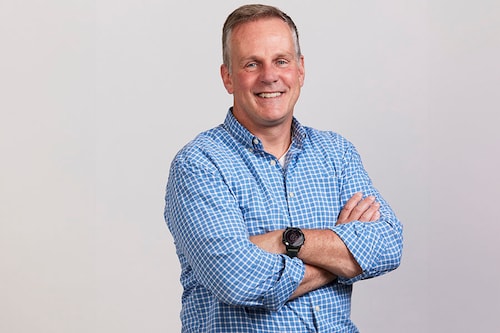'Manufacturing in India is an important part of our strategy': Crocs CEO Andrew
The leader credited with the turnaround of the wildly successful footwear brand was recently in India, and spoke exclusively to Forbes India through his visit


Andrew Rees, CEO of Crocs, is known to have powered the massive resurgence of Crocs, the ubiquitous foam clog brand, which was struggling when he first took over. This involved him having to shut off from certain markets, but India was not one of them.
“India continues to be a Tier-I market for us," he says. In fact, the brand is setting up two state-of-the-art manufacturing units within the country, hoping to diversify manufacturing out of China and Vietnam. The Tamil Nadu units should be operational by January 2024.
On his recent visit to India, Rees spoke exclusively to Forbes India. Edited excerpts:
Q. When you took over as CEO, the brand was struggling. You’ve managed to turn it around, and quite quickly, harnessing the power of social media and focusing on a core product. What was your strategy then, and has it changed now?
Crocs has gone through a number of phases. It had a strong growth trajectory in 2006-2007, when it rapidly expanded all over the world, including in India. When I joined the company in 2014, Blackstone had made an investment to re-energise the brand. So I’ve been with them for nine years, and we"ve executed, I would say a very far-reaching and robust turnaround that started with cost reductions and having the right size in our distribution.
We sold off some markets, sold off some factories that were not part of our future. India was not one of those we certainly considered India part of our future. And then we recalibrated or retooled our product and marketing strategies.
So back in 2015, the Crocs brand was about a $1 billion in global sales. This year, according to our latest guidance, we"re about $3 billion in global sales. So we"ve grown dramatically. And we"ve grown by focusing our strategies on our core classic clog, a very strong personalization engine, which allows the consumer to personalize the products. And the reason it"s been successful is because of the focus.
Also, back in 2016, we pivoted to an all-digital marketing model, with a focus on social media, and digital communication with the consumer. We do very little traditional marketing. And that"s been really effective.
In a nutshell, I would say the strategy we developed back in 2015 is really the strategy we continue to follow and it continues to work.
Q. Where does India fit into this strategy?
We focus on six key markets across the globe. Those are the big ones you might expect, like the US and China, Japan, Germany, but one of our key markets is India. We classify it as a Tier-I market. I think it has you know enormous potential for growth, obviously it"s a very large population. And when you think about our consumers in two groups, right, we have ‘explorers’ and ‘feel-goods’. Explorers are more fashion-forward, younger consumers. Our feel-goods are that more value-orientated consumer. And if you look at India, what you really have is the world"s largest population of explorers. So very focused on accessing that consumer base.
Q. How do Indian consumers compare with those of other key or emerging markets?
I would say in many ways similar, but I think the key difference is that so we think about our Indian consumers and they"re typically sort of younger and upper middle class or high-class consumers, definitely connected to social media, connected to style and fashion and looking for what"s hot and current.
In more developed markets, we penetrated further down the socio-economic strata.
Another key change is not around sales and marketing, but in manufacturing. We now have a number of manufacturing partners in India, which has been an important avenue for us to diversify manufacturing out of China and out of Vietnam into this market.
Q. The classic Croc has always been known to be more about comfort than style. How do you turn that into a luxury, high-fashion essential?
Yes, there’s a couple of things here—we did collaborations with Balenciaga, with Korean luxury brand MCM. Luxury brands are looking at creating broader relevance for their brands. The moulded technology and the way we make our products is attractive to them. You can create lots of form factors and apply colour, you can create comfort and really interesting silhouettes and distinctive products. We’ve been the world leader in that category, and we’ve been able to help them with that.
Q. How do you deal with all the dupes that flood local markets?
Yes, it is a problem to have knock-offs popping up every day. The first way to tackle them, is of course, through legal vehicles. And the other is just to keep innovating and experimenting, and stay ahead of the knock-offs. It’s an unfortunate reality of the world.
Q. If you can just round off by giving us the top leadership lessons you have learned from your time at Crocs…
Number 1, have a very simple, clear, compelling strategic focus. Having the same product and marketing strategy over the years, means that it is embedded in our culture and that everyone can act accordingly. It leads to very clear decision-making, which allows us to move fast.
Next is our company mantra of ‘Come as you are’. We also live that within the company, we have a very wide diversity of employees, which is critical in ensuring our brand appeals to a diverse range of consumers.
First Published: Sep 25, 2023, 16:52
Subscribe Now